The liberation of Mosul
The liberation of Mosul
Rasmus Flindt Pedersen
February 8, 2019

An elderly woman is driven through the city on the back of one of Golden Division’s Humvees. The temperature is nearly 50 degrees celcius, and she’s too weak to get away from the frontline on her own. 11 days later - 10. July 2017 - the former Iraqi prime minister, Haider al-Abadi, declares Mosul liberated, although fighting continues in the city for a couple of weeks
How did you experience the situation in Iraq?
The first time I was in Mosul the situation was relatively calm. I arrived in Iraq in January 2017 after large parts of East Mosul had been liberated. The fighting had subsided while the Iraqi forces were preparing the assault on the city’s more densely populated western part. ISIS was still active in East Mosul, though they now had to operate covertly using car bombs and drone strikes as their primary means of attack.
The fighting in the western part of the city was fierce and the Iraqi advance was made difficult because of the narrow streets in the old city area and the many civilians still trapped in their houses.
War is a gruesome thing to experience first hand, but you also form a special bond with the people you meet, work and live with. I feel privileged to have experienced that but I will never forget the sights, sounds and smells of war.
What motivates you to work in areas affected by wars and catastrophe?
I think it’s important that journalists and photojournalist document wars and conflicts as throughly as possible. The public need to see what goes on in the world, so we are able to decide whether we agree or disagree on the course set by our politicians. Ordinary citizens have the power to change the course of history, but we all need to act on a well-informed foundation. I cover wars and conflicts to help make that foundation better.
How do you manage to distance yourself from the things that you see?
I’m not sure if I’m able to distance my self from the things I see. The old story, that photographers use the camera as a “shield”, that the camera offer some form of protection against the things happening in front of them, definitely doesn’t apply to me. It’s true that when I photograph I’m able to exclude some of the things that happen around me, but I’m still very much focused on what goes on in front of my camera. There is also just as much happening when I’m not taking pictures, so to hope the camera will protect you from a long term psychological impact is not something I can recommend. I rely on talks with colleagues and a psychologist to make sure I’m not affected too much.
What are you working on at the moment? What are your plans?
Right now I’m waiting for the birth of my first child so that, of course, has most of my focus right now. But later this year I’m considering a project about the aftermath of war. How you move on after having survived the most extreme violence.
Rasmus Flindt Pedersen+-
Rasmus Flindt Pedersen was born in Odense, Denmark in 1981. He studied media science at university but stoped midway when he was accepted onto the photojournalist course at the Danish School of Media and Journalism. After graduating in 2011 he has worked as a freelance photojournalist based in Copenhagen.
He won the Danish Photo of the Year in 2018, was named Editorial Photographer of the Year at the 2018 International Photography Awards and has won several other awards for his work in Iraq and documenting the refugee crisis in Europe. More

An elderly woman is driven through the city on the back of one of Golden Division’s Humvees. The temperature is nearly 50 degrees celcius, and she’s too weak to get away from the frontline on her own. 11 days later - 10. July 2017 - the former Iraqi prime minister, Haider al-Abadi, declares Mosul liberated, although fighting continues in the city for a couple of weeks
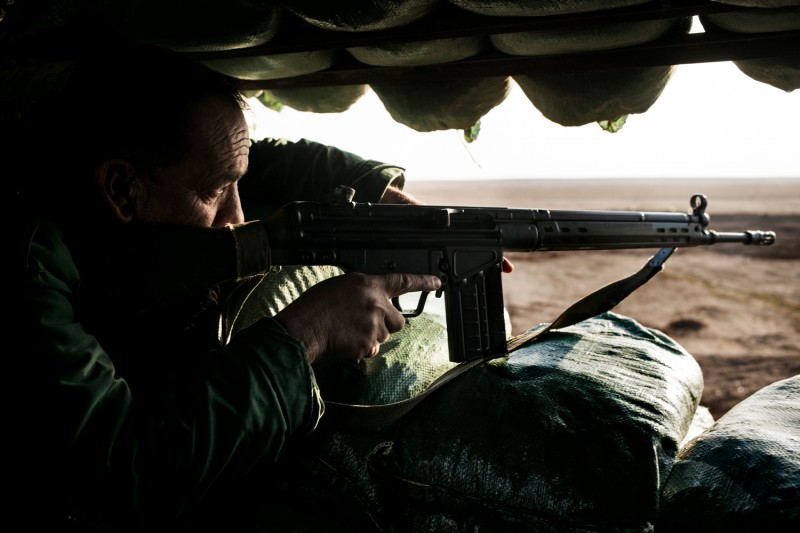
A Peshmerga soldier keeping watch from his entrenched position north of Mosul
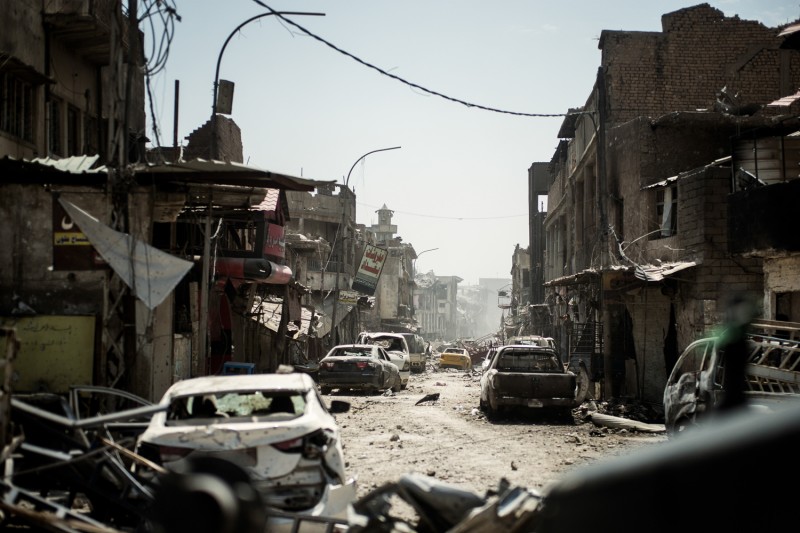
120 meters away ISIS and special forces units exchanges fire. Right behind the yellow car. The ISIS occupation of Mosul has almost reached it’s end. A few hours earlier Golden Division retook the Al-Nuri Mosque, where ISIS leader Abu Bakr al-Baghadi proclaimed the caliphate. Now the Iraqi forces are fighting to retake the last occupied areas of the city
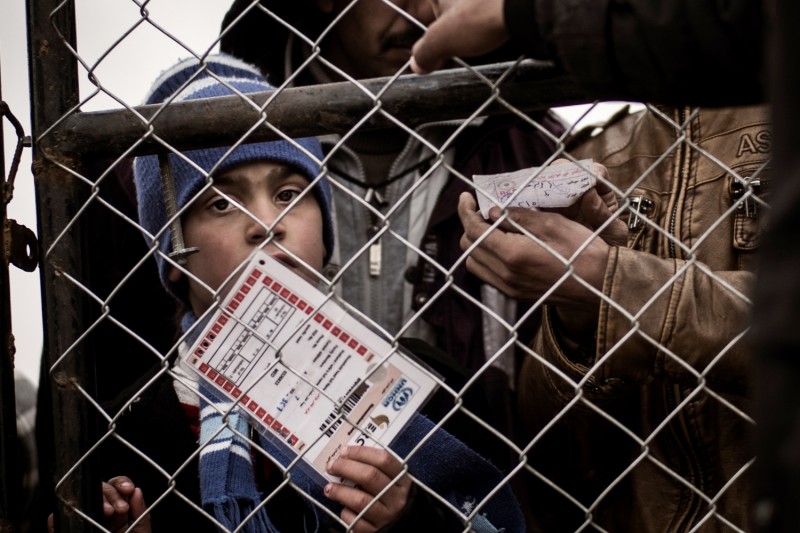
A boy standing in line in one of the IDP camps east of Mosul. He’s waiting to get a petroleum heater and some blankets for his family that has just arrived to the large camp
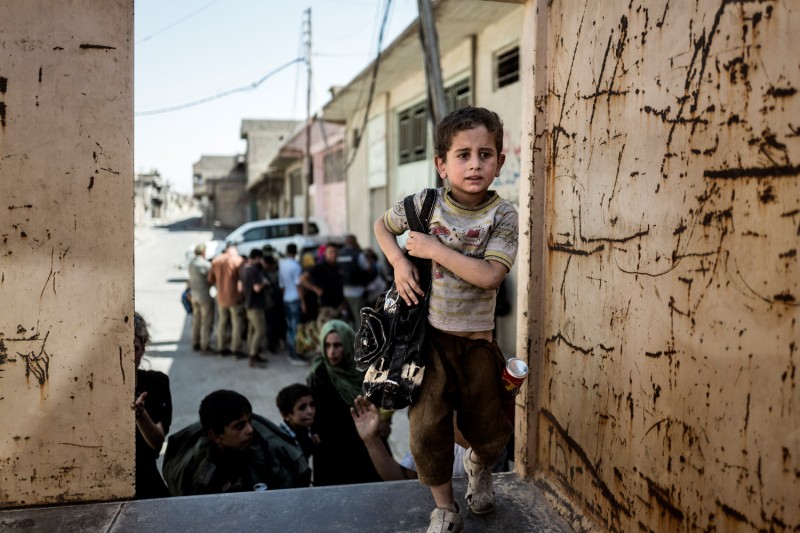
After having escaped the fighting in west Mosul the many IDPs (Internally Displaced Person) are put on trucks and driven out of the city to the registration centers and the onwards to their new temporary homes
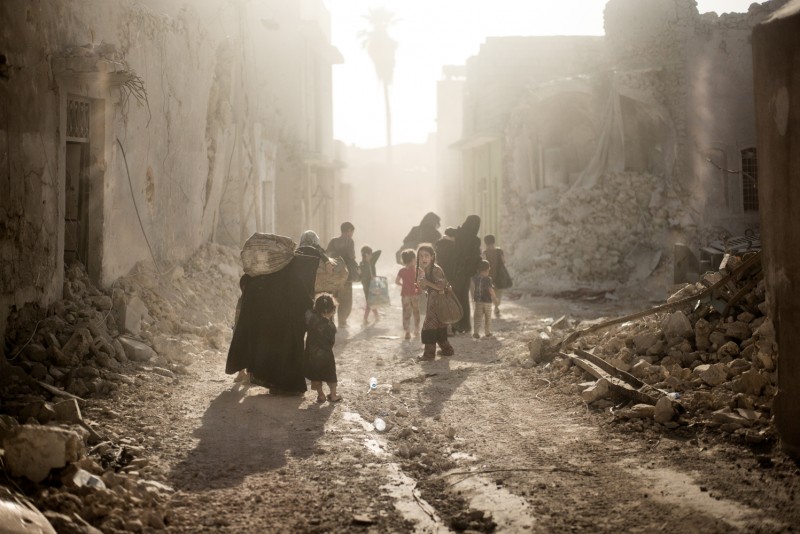
Families moving through the rubble of West Mosul in the late afternoon. The dust is hanging in the air as the sun begins to set over the city’s ruined buildings
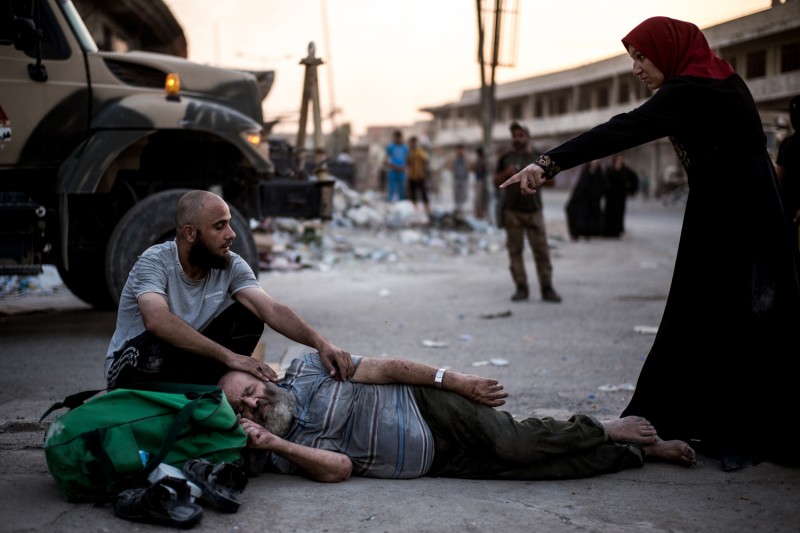
Ahmed Hamid Issa lies exhausted in front of the gate to the Iraqi military intelligence field headquarters. He cant walk, so two younger men have carried him the final distance. To make sure no ISIS fighters escape all men that make it out from the frontlines are questioned by the intelligence officers
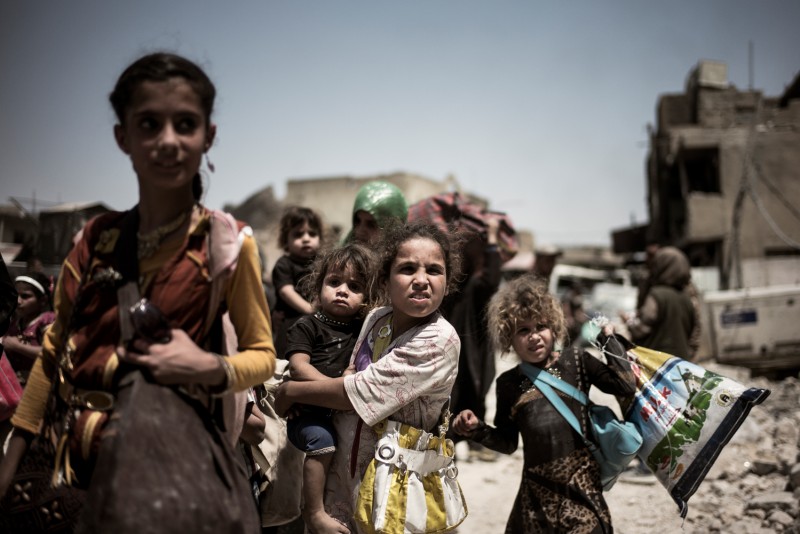
During a break in between fighting and mortar shelling civilian men, women and children take the opportunity to escape their homes and the war zone, where they have lived under siege for weeks and months
